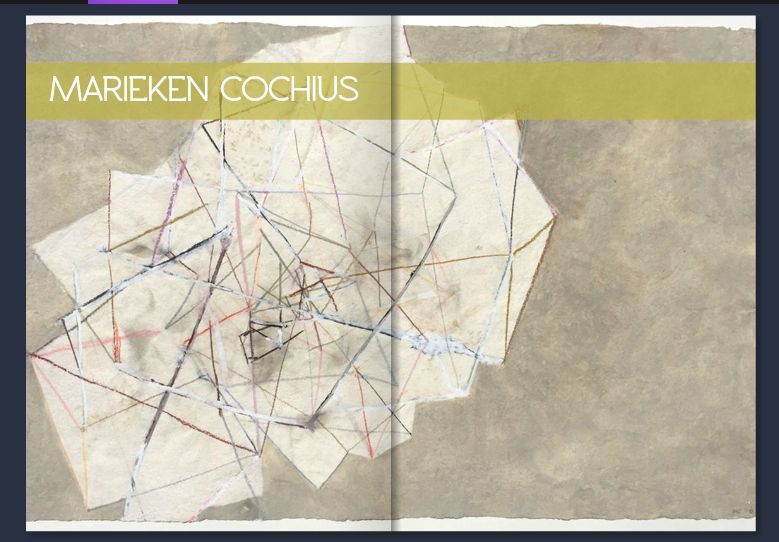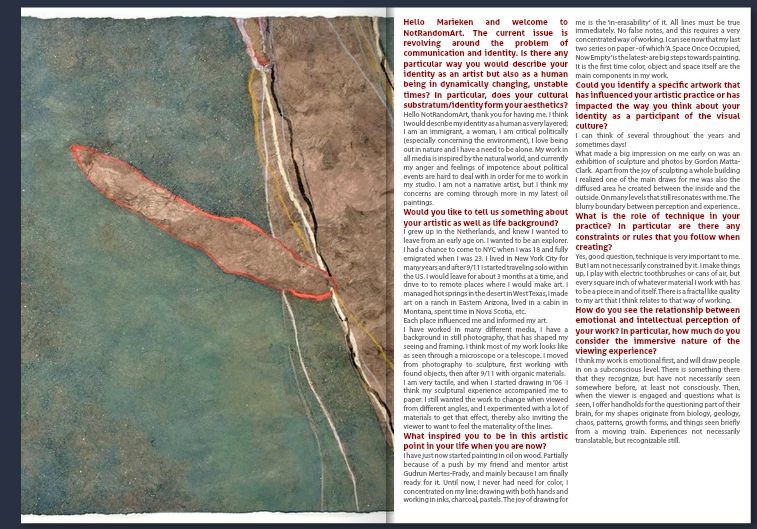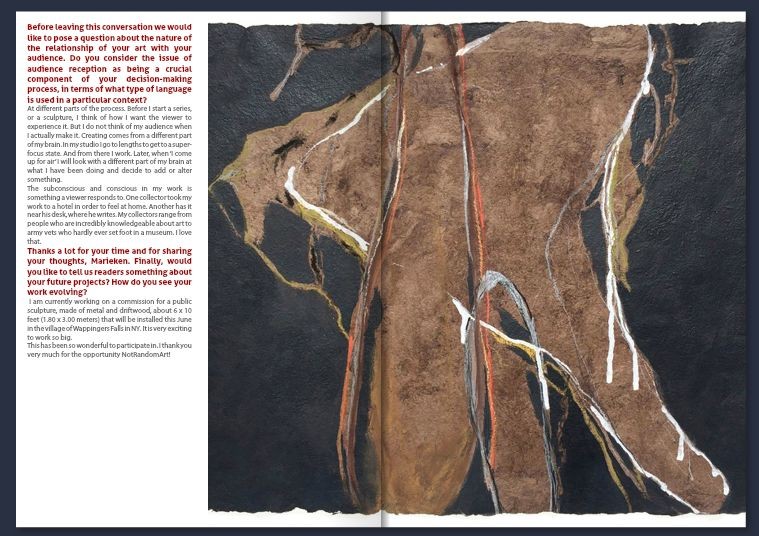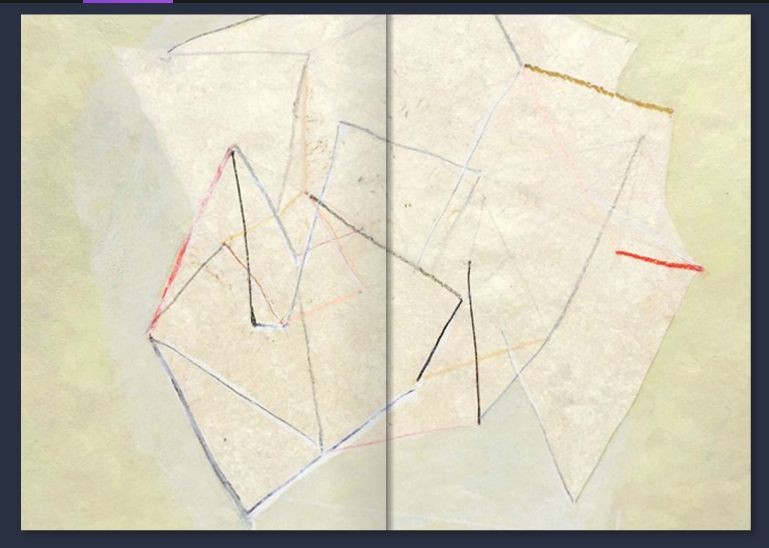INTERVIEW IN NOTRANDOMART CONTEMPORARY ART REVIEW MAGAZINE.PAGES 188-195 4/2017
https://www.joomag.com/magazine/not-random-art/0194614001488987769




Hello NotRandomArt, thank you for having me. I think I would describe my identity as a human as very layered; I am an immigrant, a woman, critical politically, especially concerning the environment, I love being out in nature and I have a need to be alone. My work in all media is inspired by nature, and currently my anger and feelings of impotence about political events are hard to deal with in order for me to work in my studio. I am not a narrative artist, but I think my concerns are coming through more in my work. My latest paintings (not shown) especially have an apocalyptic undertone.
-Would you like to tell us something about your artistic as well as life background?
I grew up in the Netherlands, and knew I wanted to leave from an early age on. I wanted to be an explorer. I had a chance to come to NYC when I was 18 and fully emigrated when I was 23. I lived in New York City for many years and after 9/11 I started traveling solo within the US. I would leave for about 3 months at a time, and drive to to remote places where I would make art. I managed hot springs in the desert in West Texas, made art on a ranch in Eastern Arizona, lived in a cabin in Montana, spent time in Nova Scotia etc.
Each place influenced me and informed my art.
I have worked in many different media, I have a background in still photography, that has shaped my seeing and framing. I think most of my work looks like as seen through a microscope or a telescope. I moved from photography to sculpture, first working with found objects, then after 9/11 with organic materials.
I am very tactile, and when I started drawing in ‘06 I think my sculptural experience accompanied me to paper. I still wanted the work to change when viewed from different angles, and I experimented with a lot of materials to get that effect, thereby also inviting the viewer to want to feel the materiality of the lines.
-What inspired you to be in this artistic point in your life when you are now?
I have just now started painting in oil on wood. Partially because of a push by my friend and mentor artist Gudrun Mertes-Frady, and mainly because I am finally ready for it. I never had need for color, I concentrated on my line, drawing with both hands and working in inks, charcoal, pastels. The joy of drawing for me is the ‘in-erasability’ of it. All lines must be true immediately. No false notes, and this requires a very concentrated way of working. I can see now that my last two series on paper -of which ‘A Space Once Occupied, Now Empty’ is the latest- are big steps towards painting.
It is the first time color, object and space itself are the main components in my work.
-Could you identify a specific artwork that has influenced your artistic practice or has impacted the way you think about your identity as a participant of the visual culture?
I can think of several throughout the years and sometimes days!
What made a big impression on me early on was an exhibition of sculpture and photos by Gordon Matta-Clark. Apart from the joy of sculpting a whole building I realized one of the main draws for me was also the diffused area he created between the inside and the outside. On many levels that still resonates with me. The blurry boundary between perception and experience..
-What is the role of technique in your practice? In particular are there any con
straints or rules that you follow when creating?
Yes, good question, technique is very important to me. But I am not necessarily constrained by it. I make things up, I play with electric toothbrushes or cans of air, but every square inch of whatever material I work with has to be a piece in and of itself. There is a fractal like quality to my art that I think relates to that way of working.
-How do you see the relationship between emotional and intellectual perception of your work? In particular, how much do you consider the immersive nature of the viewing experience?
I think my work is emotional first, and will draw people in on a subconscious level. There is something there that they recognize, but have not necessarily seen somewhere before, at least not consciously. Then, when the viewer is engaged and questions what is seen, I offer handholds for the questioning part of their brain, for my shapes originate from biology, geology, chaos, patterns, growth forms, and things seen briefly from a moving train. Experiences not necessarily translatable, but recognizable still.
-Before leaving this conversation we would like to pose a question about the nature of the relationship of your art with your audience. Do you consider the issue of audience reception as being a crucial component of your decision-making process, in terms of what type of language is used in a particular context?
At different parts of the process. Before I start a series, or a sculpture, I think of how I want the viewer to experience it. But I do not think of my audience when I actually make it. Creating comes from a different part of my brain. In my studio I go to lengths to get to a super-focus state. And from there I work. Later, when ‘I come up for air’ I will look with a different part of my brain at what I have been doing and decide to add or alter something.
The subconscious and conscious in my work is something a viewer responds to. One collector took my work to a hotel in order to feel at home. Another has it near his desk, where he writes. My collectors range from people who are incredibly knowledgeable about art to army vets who hardly ever set foot in a museum. I love that.
Thanks a lot for your time and for sharing your thoughts, Marieken. Finally, would you like to tell us readers something about your future projects? How do you see your work evolving?
I am currently working on a commission for a public sculpture, made of metal and driftwood, about 6 x 10 feet (1.80 x 3.00 meters) that will be installed this June in the village of Wappingers Falls in NY. It is very exciting to work so big.
This has been so wonderful to participate in. I thank you very much for the opportunity NotRandomArt!
Interview in NotRandomArt Contemporary Art Review magazine.Pages 188-195 https://www.joomag.com/magazine/not-random-art/0194614001488987769
